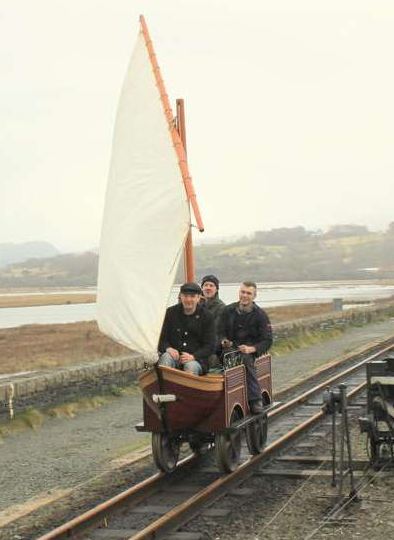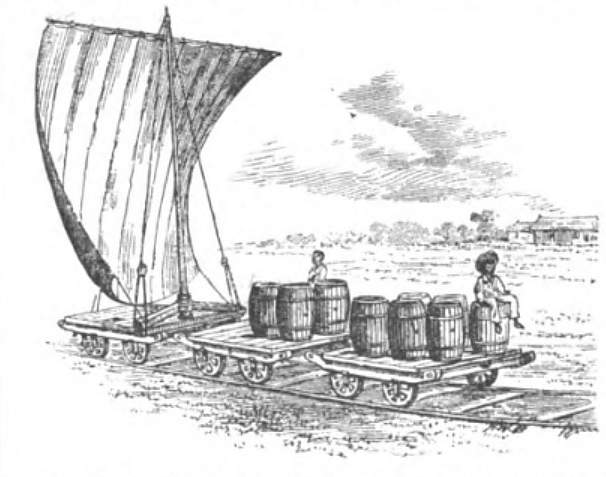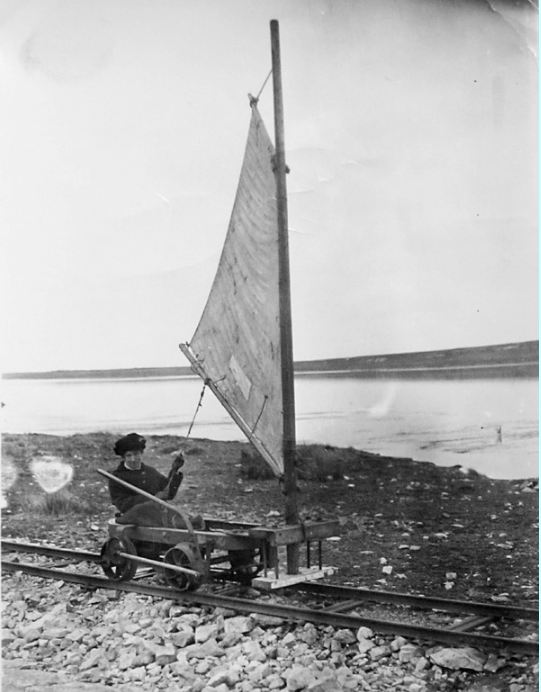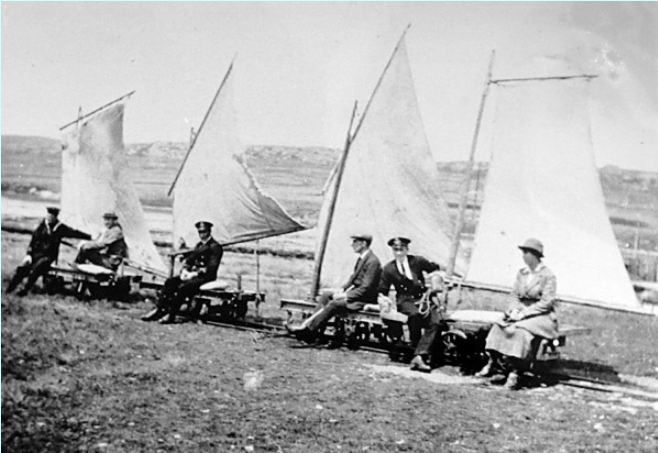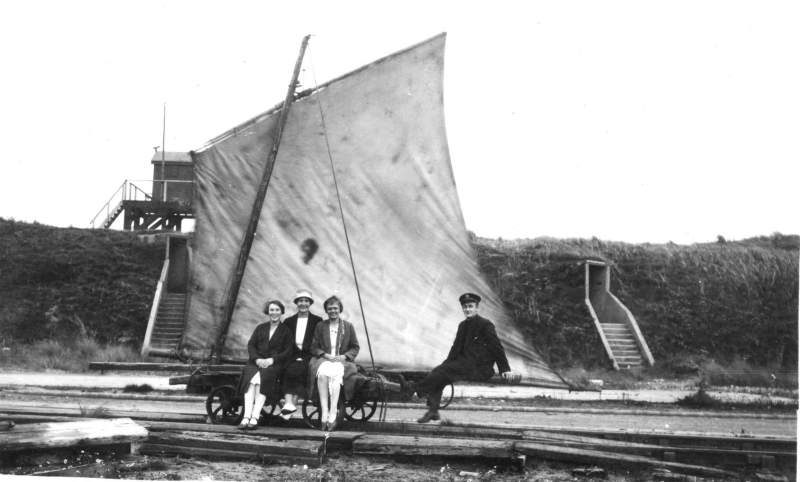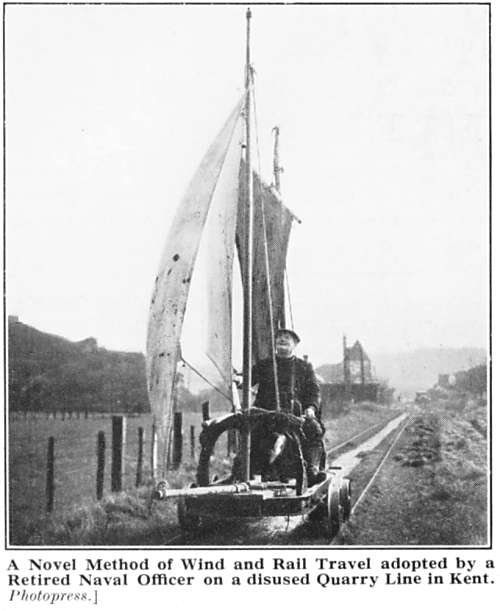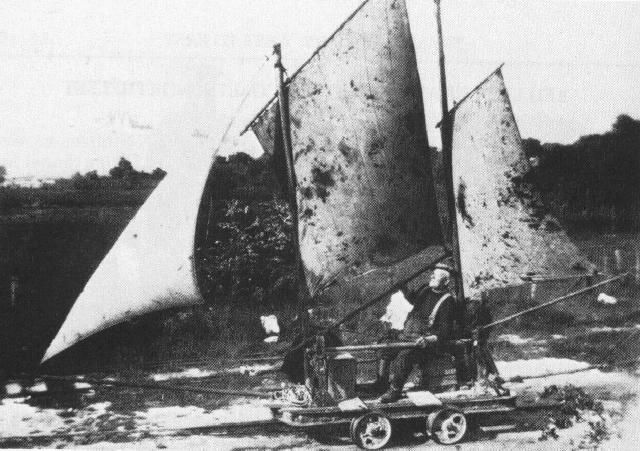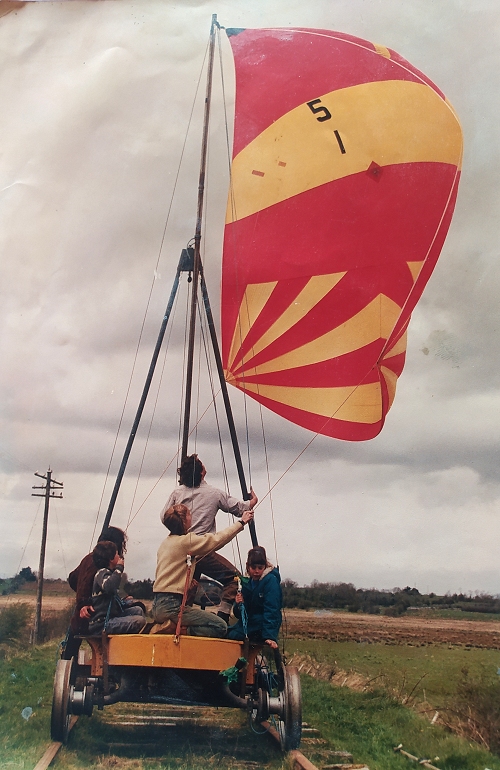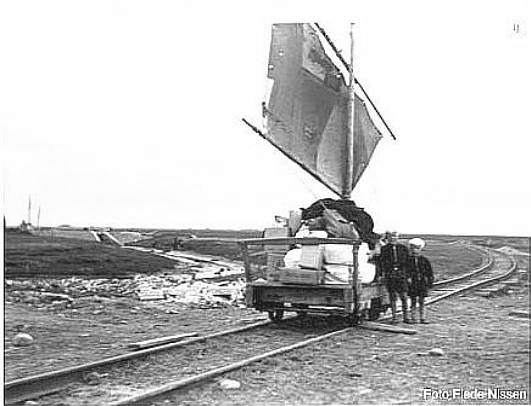“On the 22nd of January, 1830, a car which had been constructed to be propelled by a sail, was carried along at the rate of 20 miles an hour, the whole length of the rail [six miles]. The preparations for sailing were very hastily got up, and of course were not of the best kind; owing to this circumstance the experiment afforded high sport.
"The wind blew very fresh from about northeast which, as a sailor would say, was ‘abeam,’ and would drive the
car either way with equal speed. When going at the rate of about twelve miles an hour and loaded with fifteen passengers, the mast went by the board, with the sail and rigging attached, carrying with them
several of the crew. The wreck was described by several friendly shipmasters, who kindly rendered assistance in rigging
a jury mast, and the car was again soon put under way…it was ascertained that the car would sail within four points of the wind…when a northwester’ was blowing, it would be dragged out to the farther end of the Mount Clair embankment, and come back, literally with flying colors.”
From the Charleston Courier for 20 March 1830








